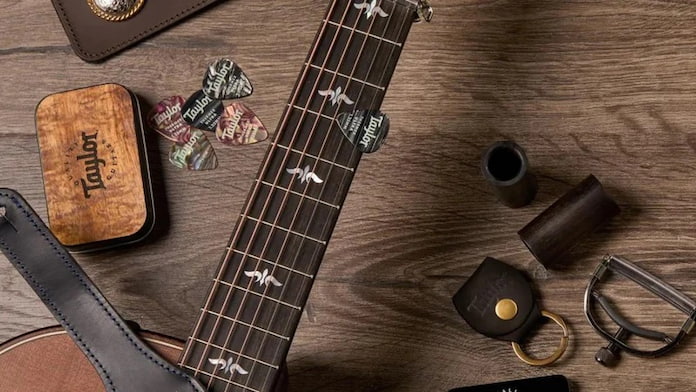
So, you’ve decided to embark on the six-string adventure, right? Well, get ready to dive into the world of riffs, chords, and maybe a few calloused fingertips. Choosing your first guitar is an exhilarating but critical step in your musical journey. One that might make all the difference between loving it or ending up with a broken spirit. So, before you head off to the music shop, find out some of the basics about guitars and gear.
Choosing Your Instrument
First things first, pick a guitar that suits you. Don’t let fancy brand names scare you away; just find one that feels right in your hands. Step into a well-stocked guitar shop and try a few to see how different guitar bodies feel. It’s all about that personal connection, the tone, and your play style.
What Guitar Style is Best for Beginners?
The decision between an acoustic and an electric guitar depends on your musical preferences and playing environment. Acoustic guitars are versatile and suitable for solo performances or small gatherings. Electric guitars are ideal for playing in bands and exploring a wide range of effects. Consider which type aligns with your aspirations and the sound you want to achieve.
Acoustic Guitars
Acoustic guitars have long been a popular choice for novices. They are known for their natural, unplugged sound and are perfect for various genres like folk, country, and singer-songwriter music. Consider the body shape (dreadnought, concert, etc.) for comfort and playability. Pay attention to the tonewoods (spruce, mahogany, etc.) as they greatly impact the guitar’s sound.
Electric Guitars
Electric guitars offer a broad range of tones and are suitable for rock, blues, jazz, and more. Choose a body style (Stratocaster, Les Paul, etc.) based on your preferred music genre and comfort. Explore different pickups (single-coil, humbucker) to understand their impact on sound.
Semi-Acoustic Electric/ Archtop Guitars
Combining the best of both worlds, semi-acoustic or archtop guitars have a hollow body for acoustic-like resonance while offering the option to be amplified. Ideal for genres like jazz and blues, these guitars provide versatility for various playing styles. However, they might prove more difficult for beginners and restrictive to playing different styles.

Features to Explore
Different guitar styles have different features and sounds. It’s important to familiarise yourself with these musical instruments and their characteristics before investing in one. Consider the type of music you’re passionate about, as this will guide you in selecting the appropriate guitar.
Body Type and Size
Guitars come in various body shapes and sizes. Acoustic guitars commonly have dreadnought, concert, or parlour shapes, each offering different tones and playability. Electric guitars also have diverse body shapes, such as Stratocaster, telecaster, and Les Paul. Choose a body type that feels comfortable and suits your aesthetic preferences.
Neck Profile and Scale Length
The neck profile and scale length affect the playability of a guitar. Neck profiles come in various shapes, such as C, U, and V, each providing a different feel for your hands. Scale length influences string tension and can affect the ease of bending notes. Experiment with different neck profiles and scale lengths to find what suits you best.
Check Action and Playability
The term action in guitar terminology refers to the space or gap between the strings and the fretboard. Low action makes playing easier for beginners, but too low can cause buzzing. High action requires more finger strength but offers cleaner tones. Strive for a balance that feels comfortable and suits your playing style.
You should visit a music store and play several guitars to assess their playability and comfort. Consider the weight, body shape, and how the guitar feels against your body. Pay attention to the neck and fretboard, ensuring they are comfortable for your hand size.
Assess the Tonewoods
The tonewoods used in a guitar significantly impact its sound. Common tonewoods include mahogany, spruce, cedar, rosewood, and maple. Research how different tonewoods influence the guitar’s tone and choose one that aligns with your sonic preferences.
Additional Features
Some guitars come with built-in electronics, allowing you to plug into an amplifier or sound system, all of which you should be able to find at a guitar shop. This feature is beneficial for performing in larger venues. Additionally, some guitars have cutaways, making it easier to access higher frets. Consider these features based on your playing aspirations.

Essential Accessories
- Guitar Amplifiers: For electric and semi-acoustic guitars, a good amplifier is crucial for shaping your sound. Consider the wattage based on your playing environment – lower wattage for home practice and higher wattage for live or studio performances. Experiment with built-in effects or consider purchasing separate pedals for additional tonal options.
- Guitar Cases and Gig Bags: Protect your investment by getting a quality case or gig bag. Cases offer better protection, while gig bags are more portable and suitable for short trips. Ensure a proper fit to prevent any movement inside the case or bag. Online music stores offer a wide range of good quality cases so you can browse around.
- Tuners: Keeping your guitar in tune is essential for a pleasing sound. Clip-on tuners are convenient and can be attached to the headstock, providing accurate tuning in any environment.
- Guitar Straps: Straps enhance comfort during long playing sessions and help with posture. Choose a strap that suits your style and material preferences, ensuring it can support the weight of your guitar.
- Picks and Strings: Experiment with different pick thicknesses to find what feels comfortable for your playing style. Consider string gauge based on your preferred genre – lighter strings for easier bending and heavier strings for a fuller sound.

In a Nutshell
Finding your first guitar is a personal and exciting journey. Take the time to research, play different guitars, and consult with experienced players or music store staff. In the grand scheme of things, playing guitar is about expressing yourself, having fun, and maybe impressing a few people along the way. So, gear up, crank it up, and let the music flow. Welcome to the world of strings, and remember, it’s not the gear – it’s the ear!















